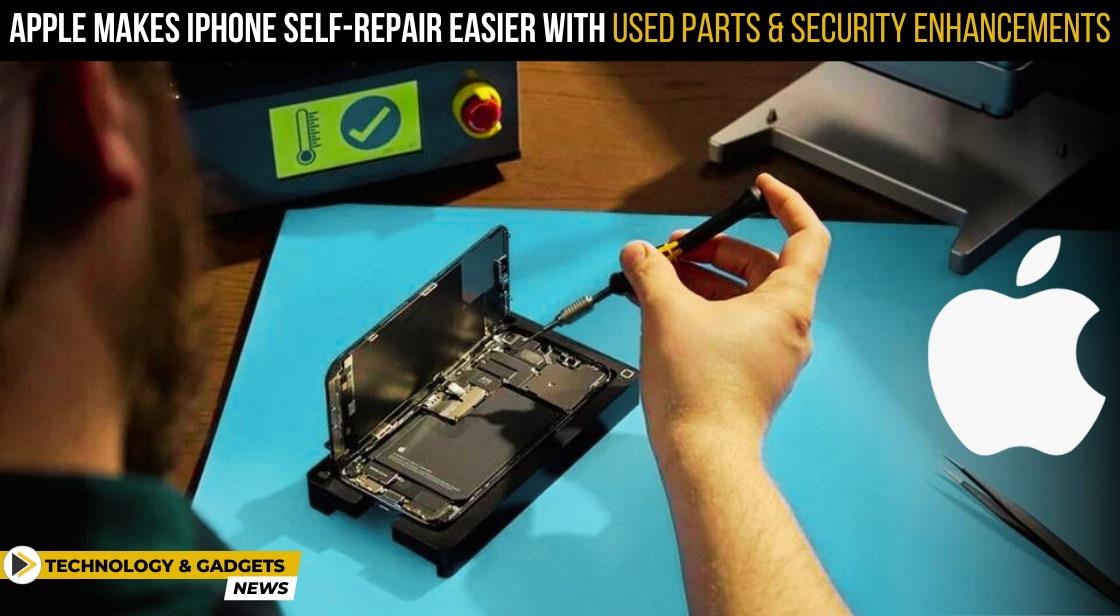Apple Makes iPhone Self-Repair Easier with Used Parts and Security Enhancements

News Synopsis
Apple is giving users more control over their iPhones by allowing repairs with genuine used parts. This update, announced in a blog post, aims to increase repair options, extend product life, and improve user privacy and security.
How it Works: Used Parts Get a Second Life
Previously, Apple's "parts pairing" system linked a device's serial number to new parts, preventing repairs with used components. This restriction triggered warnings about unverified parts and potential malfunctions of Face ID and Touch ID.
The new policy eliminates these limitations. Apple says "used genuine Apple parts will now benefit from the full functionality and security afforded by the original factory calibration, just like new genuine Apple parts." This opens doors for users and third-party repair shops to utilize used displays, batteries, cameras, and potentially future Face ID sensors in iPhone repairs.
Strengthening Security: Activation Lock for Parts
While embracing used parts, Apple is also introducing security measures. They're adding Activation Lock to iPhone parts, making it harder to use stolen phones as parts sources.
Here's how it works: "If a device under repair detects that a supported part was obtained from another device with Activation Lock or Lost Mode enabled, calibration capabilities for that part will be restricted," Apple explains. This prevents stolen phone parts from functioning properly, deterring theft for parts.
Strengthening Security for Used Parts
While embracing used parts, Apple is also shoring up security measures:
-
Activation Lock for Parts: To deter theft for parts, Apple is adding Activation Lock to iPhone parts. This will prevent stolen iPhones from being dismantled and their parts used in repairs.
-
iPhones under repair will detect if a supported part originated from another device with Activation Lock or Lost Mode enabled.
-
If such a part is detected, calibration capabilities for that part will be restricted.
-
Why the Change?
This move comes after criticism of Apple's previous stance on repairs. Right-to-repair advocates argued that restricting repairs to Apple or authorized providers limited consumer choice and inflated repair costs.
Apple previously defended parts pairing, stating it ensured user privacy and security by using genuine components. However, with this update, Apple seems to have found a way to balance user control with security measures.
John Ternus, Apple's senior vice president of hardware engineering, maintains parts pairing's value: “Parts pairing […] is not evil. We’re basically saying, if we know what module’s in there, we can make sure that when you put our module in a new phone, you’re gonna get the best quality you can. Why’s that a bad thing?"
Strengthening Tracking Measures:
In tandem with allowing the utilization of older genuine parts, Apple is fortifying its tracking mechanisms for used iPhone components. The introduction of the Activation Lock feature to these parts serves as a safeguard against the illicit use of stolen iPhones for parts. Activation Lock will restrict calibration capabilities if a repaired device detects that a supported part originated from a device with enabled Lost Mode or Activation Lock.
Conclusion:
Apple's decision to facilitate iPhone repair with used genuine parts marks a significant step towards empowering users and service providers. By balancing user privacy, security, and repair accessibility, Apple is poised to enhance the repair experience and extend the lifespan of its products. This move reflects a commitment to fostering a more sustainable and user-centric approach to device maintenance in the Apple ecosystem.
You May Like









